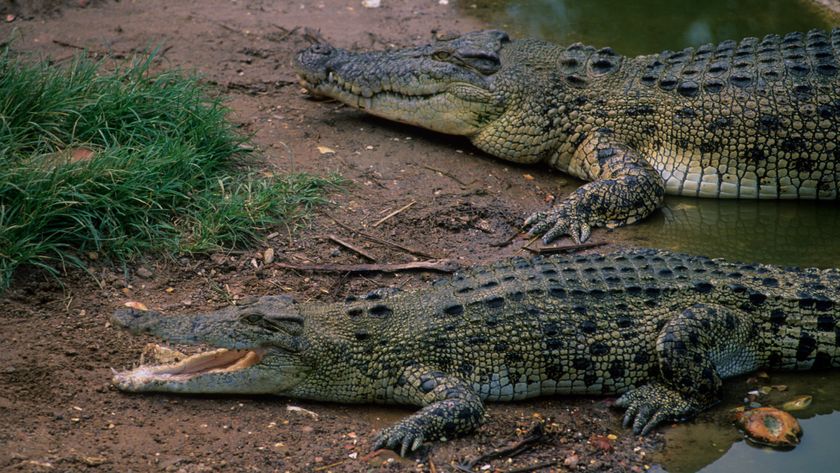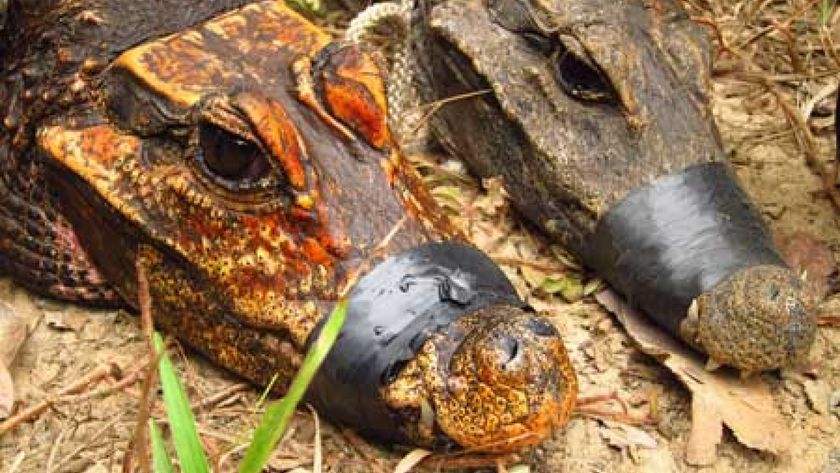Can You Hear Me? Cell Phone Rings From Croc's Belly

Eating electronics can cause, at the very least, a bellyache. But nobody told a crocodile at a Ukraine aquarium. The 14-year-old, named Gena, apparently swallowed a cell phone that had been dropped by a woman trying to photograph the toothy reptile, the Associated Press reports.
Four weeks and counting since the mishap, and the crocodile has not eaten nor had a bowel movement. The animal also seems to be depressed and in pain, moving very little and avoiding any play with the other African crocodiles, the AP reports.
Veterinarians say surgical removal would be a last resort, since that can be dangerous and the stitches could take some three weeks to heal.
Cell phones would seem relatively benign compared with some of the ferocious meals these predators eat, including snakes, buffalo, cattle and even people (yeah, we can be ferocious sometimes). One study published in 2008 in the journal Physiological and Biochemical Zoology explained crocodiles' spectacular method of digesting large meals that lets them eat 23 percent of their body weight at once, bones and all.
The secret behind this champion eating is a heart valve that crocs control neurologically, which lets blood bypass the lungs and flow through a special aorta straight to the stomach, enabling them to secrete gastric acid at rates 10 times faster than those measured in any other animal.
Read the full story at Yahoo News.
- Top 10 Deadliest Animals
- How Does a Snake Swallow a Larger Snake?
- What's the Difference Between Alligators and Crocodiles?
You can follow LiveScience on Twitter @livescience.
Sign up for the Live Science daily newsletter now
Get the world’s most fascinating discoveries delivered straight to your inbox.












